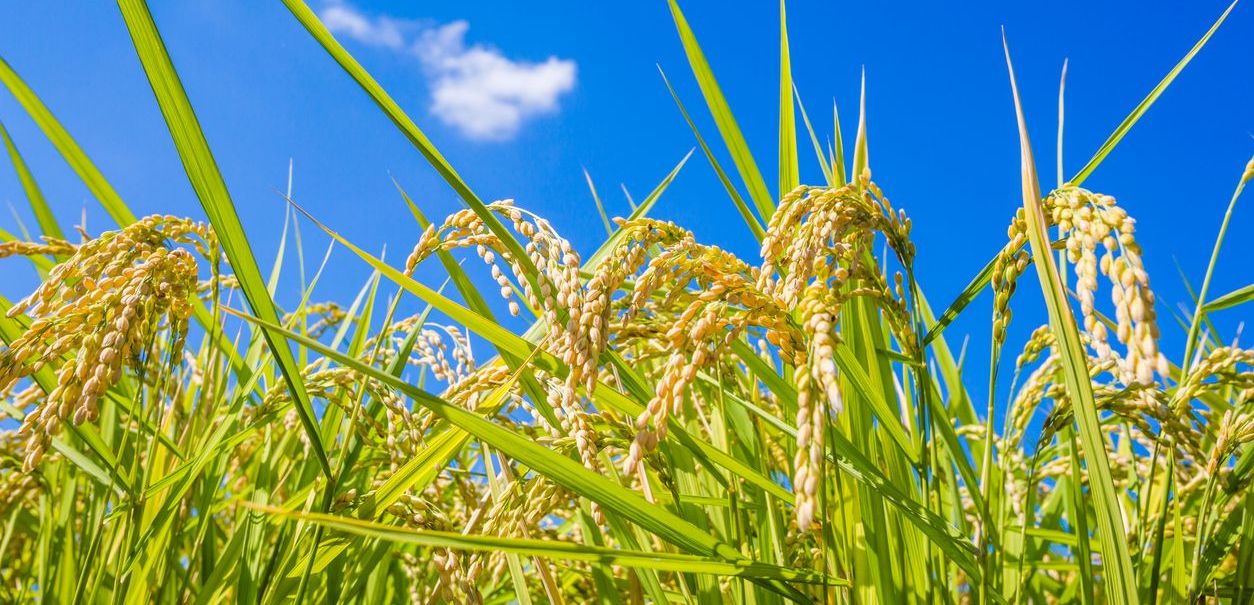2024/09/01
Rice Shortage in Japan; Investment in Stabilizing and Strengthening Self-Sufficiency in Normal Times Required!

Typhoon No. 10, reported to be one of the most powerful typhoons ever, hit Kyushu. It is still moving slowly, and its course is unstable. According to the forecast as of August 29, it is going to move eastward, tracing Shikoku and Honshu, and then move northward again. I hope the degree of the damage is minimal and I am concerned about the impact on fruits, vegetables, and other crops, especially rice, which has been in short supply ahead of the harvest season. On August 27, the Ministry of Agriculture, Forestry, and Fisheries (MAFF) projected, “The supply of new rice will begin by the end of the month, and the shortage of rice in stores will be gradually solved.” However, prolonged effects are concerned.
Store inventories of rice started to become scarce around the middle of June this year. The rice shortage was caused by last summer’s scorching heat, global wheat price surge, recovering demand for dining out after the COVID-19 pandemic, and growing demand for Japanese cuisine by foreign travelers. In addition to these factors, there has been “stocking up” demand triggered by the issuance of the “Nankai Trough Earthquake Temporary Earthquake Information.” The essence of the problem, however, is the structural weakening of the domestic production base, or more specifically, the aging of rice farmers, farmers leaving the industry due to management difficulties, and rice acreage cutbacks.
Food security is the first and foremost priority in the security sector. Japan’s food self-sufficiency rate remains at 38% (in 2023, on a calorie basis). Some estimates suggest that the domestic self-sufficiency ratio is less than 10% when taking fertilizer, feed, and seeds, which are dependent on imports from overseas, into account. In the midst of a global grain shortage, India is restricting exports, while China is strengthening its stockpile by heavy buying. Europe is supporting farmers’ income by offering public subsidies, and the US is protecting and strengthening domestic agriculture by providing price loss coverage and other measures.
In June 2024, “Act on Measures for Situations of Difficulty in Food Supply” was formulated. If a situation of extreme difficulty in food supply is anticipated or occurs, the government can issue instructions and orders to farmers to change their production plans in stages, including change of planting items, and if they do not comply with these, the government will disclose their names and impose fines. I do not believe this is the appropriate means to solve the problem of potential food shortage. Security is to be prepared in normal times on one’s own. In this regard, “maintaining supply capacity through exports” and “securing stable imports,” which are positioned as priority measures in the Food, Agriculture and Rural Areas Basic Act that has been revised for the first time in 25 years, are contradictory to the “security” that the government ultimately has to be responsible for. The government needs to have thorough discussion on how much responsibility it has for “food,” namely, the lives and health of the citizens, how much it depends on others, and how much it leaves the matter to the “market.”
This Week’s Focus, August 30
Takashi Mizukoshi, the President